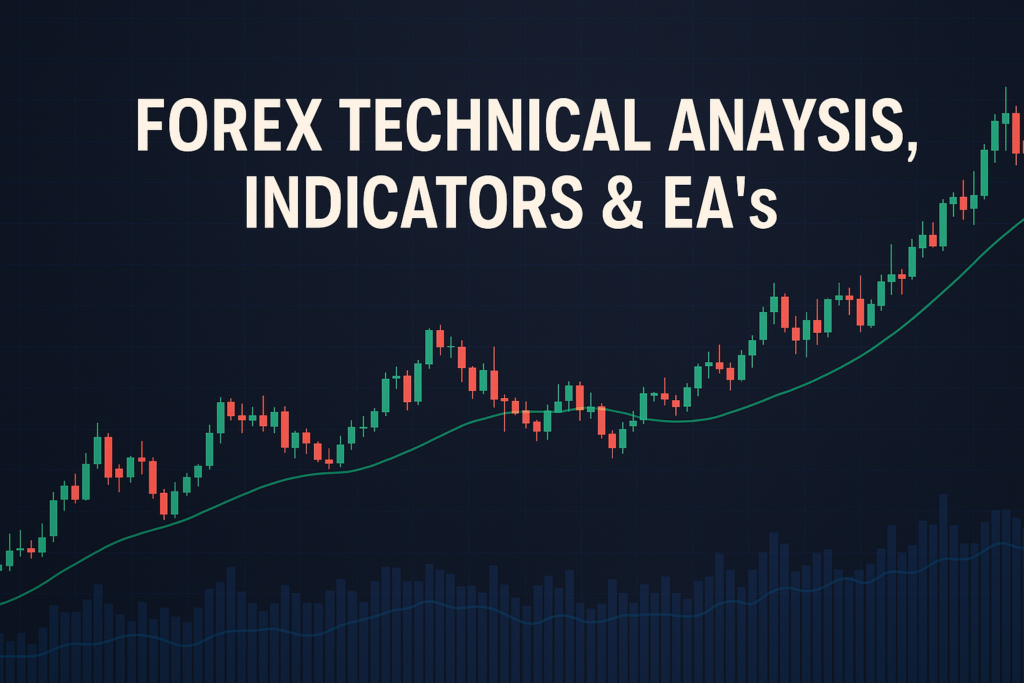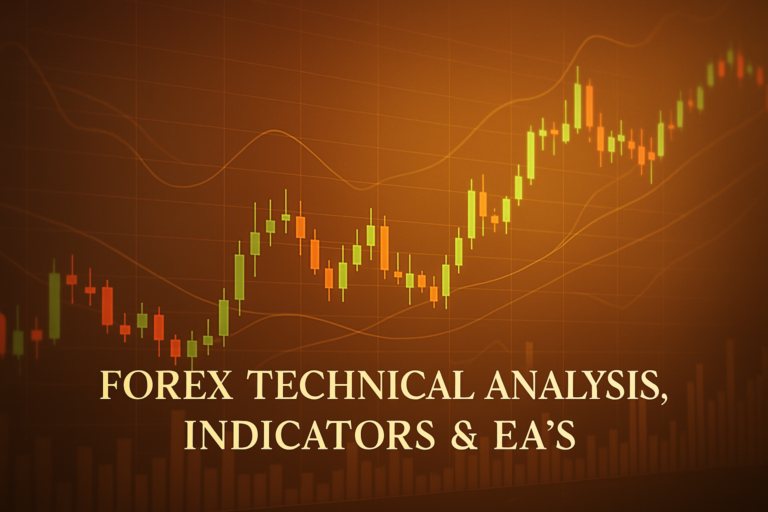
The money flow index (MFI) is an essential momentum indicator in Forex trading, helping traders identify market trends and potential reversals.
The money flow index (MFI) is a unique tool in Forex trading that helps traders gauge the strength of a market trend. It combines price and volume data, providing insights into potential price reversals and trend continuations. When traders use the MFI, they can make more informed decisions, increasing their chances of success.
Yet, many traders—both beginners and seasoned professionals—struggle with effectively using the money flow index (MFI). The complexity of the tool, coupled with the fast-paced nature of the Forex market, can lead to confusion. Understanding and applying the MFI correctly is crucial for traders who wish to enhance their trading strategies and achieve better results.
In this article, we’ll explore the ins and outs of the money flow index (MFI). We will discuss its workings, historical significance, advantages and disadvantages, practical applications, and trading strategies. By the end, you will have a solid understanding of how to leverage the MFI for your trading success.
Before diving deep into the MFI, it’s worth mentioning another important indicator: the Average Directional Movement Index (ADX). This tool is often used alongside the MFI to give traders more clarity on market trends.
What is a money flow index mfi?
The money flow index (MFI) is a momentum indicator that helps traders assess the buying and selling pressure in a market. Think of it as a way to measure how much money is flowing into or out of a currency pair. If more money is flowing in, it suggests that the price may rise. Conversely, if money is flowing out, the price might drop. Traders use the MFI to identify potential buy and sell signals.
Types of money flow index mfi
There are several variations of the money flow index (MFI) that traders can utilize. Some of the common types include:
- Simple MFI: The basic version that calculates the money flow based on average price and volume.
- Exponential MFI: This version gives more weight to recent prices and volumes, making it more responsive to changes.
- Weighted MFI: Similar to the exponential version, but it weights data differently to smooth out fluctuations.
How money flow index mfi smooth out price action
The money flow index (MFI) helps smooth out price action by averaging the price and volume data over a specific period. This means that rather than reacting to every small price movement, the MFI provides a clearer picture of the market’s overall trend. This smoothing effect makes it easier for traders to spot trends and potential reversals.
Common periods used and why
Traders typically use different periods for the money flow index (MFI) depending on their trading style. Common periods include 14, 21, and 50 days. The 14-day period is popular because it balances sensitivity and reliability. Shorter periods can lead to more noise, while longer periods may miss timely signals. Understanding the right period to use can help traders capture optimal entry and exit points.
The History of money flow index mfi: How It Became Popular
Origin of money flow index mfi
The money flow index (MFI) was created by J. Welles Wilder Jr. in the late 1970s. He designed it to help traders measure market momentum by factoring in both price and volume. Wilder aimed to provide a tool that could enhance trading strategies and improve decision-making.
When did traders start using it widely?
Traders began to adopt the money flow index (MFI) widely in the 1980s, as they recognized its potential for identifying market trends and reversals. As Forex trading grew in popularity, the MFI became a staple in many traders’ toolkits.
Real-life stories
Many professional traders have shared stories about how they made significant profits using the money flow index (MFI). For instance, a trader might have spotted a divergence between the MFI and price action, leading them to enter a trade just before a major price reversal. Such stories highlight the MFI’s effectiveness in the hands of skilled traders.
Advantages and Disadvantages of money flow index mfi
Advantages:
- Helps identify trends easily: The MFI allows traders to recognize market trends, making it easier to decide when to buy or sell.
- Useful for dynamic support and resistance: The MFI can help spot potential support and resistance levels based on buying and selling pressure.
- Works well for crossover strategies: Traders often use the MFI in combination with other indicators to identify crossover points, enhancing their trading strategies.
Disadvantages:
- Lags behind price movements: The MFI can sometimes react slowly to sudden price changes, leading to missed opportunities.
- Can give false signals in sideways markets: In consolidating markets, the MFI may produce misleading signals, causing traders to make poor decisions.
How to Apply money flow index mfi on MT4 & MT5
Step-by-step guide to adding money flow index mfi on charts
To apply the money flow index (MFI) on your MT4 or MT5 platform, follow these simple steps:
- Open your chart and navigate to the “Insert” menu.
- Select “Indicators,” then go to “Oscillators.” Choose “Money Flow Index.”
- Click “OK” to add the indicator to your chart.
Customizing money flow index mfi settings
You can customize the MFI settings to suit your trading style. Adjust the period, color, and type of the indicator to make it more visually appealing and functional for your analysis. This personalization can help you interpret the MFI signals more effectively.
Saving templates for easy application
Once you’ve set up the money flow index (MFI) to your liking, consider saving it as a template. This way, you can easily apply the same settings to other charts in the future, saving you time and effort.
5 to 7 Trading Strategies Using Only money flow index mfi
All Time Frame Strategy (M5 to D1)
This strategy uses the MFI across various time frames for maximum effectiveness. Traders look for an MFI above 80 to sell and below 20 to buy. For example, if the MFI crosses above 20 on the M15 chart, it may signal a buying opportunity.
Trending Strategies
In trending markets, traders use the MFI to confirm the trend direction. If the MFI is above 50 and rising, they look for buying opportunities. Conversely, if it’s below 50 and falling, they consider selling. For instance, a trader might buy when the MFI rises above 50 in a strong bullish trend.
Counter Trade Strategies
Counter trading involves going against the prevailing trend using the MFI. If the MFI is above 80, indicating overbought conditions, a trader might look for selling opportunities. This strategy is risky but can yield high rewards when executed correctly.
Swing Trades Strategies
For swing trading, traders focus on the MFI to spot potential reversals. When the MFI dips below 20 and then crosses back above, it may signal a buying opportunity. For example, a trader may buy when the MFI crosses above 20 after a recent dip.
5 to 7 Trading Strategies Combining money flow index mfi with Other Indicators
All Time Frame Strategy (M5 to D1)
Combining the MFI with other indicators enhances its effectiveness. For instance, using the MFI alongside the RSI can provide better entry points. If both indicators signal overbought conditions, it’s a strong sell signal.
Trending Strategies
When combined with moving averages, the MFI can confirm trend direction. For example, if the price is above the moving average and the MFI is rising, it indicates a strong uptrend, prompting a buy signal.
Counter Trade Strategies
Combining the MFI with Bollinger Bands can also yield fruitful results. If the MFI shows overbought conditions while the price touches the upper Bollinger Band, it may signal a potential reversal point for a short trade.
Swing Trades Strategies
For swing trading, the MFI can be paired with Fibonacci retracement levels. If the MFI dips below 20 and the price retraces to a Fibonacci level, it can signal a buying opportunity.
In addition to technical indicators, understanding forex fundamental analysis can provide important context for trading decisions.
Top 10 FAQs About money flow index mfi
1. What is the money flow index (MFI)?
The MFI is a momentum indicator that measures market strength based on price and volume data.
2. How do you interpret the MFI?
Readings above 80 indicate overbought conditions, while readings below 20 suggest oversold conditions.
3. Can the MFI predict market reversals?
Yes, the MFI can help identify potential reversals, especially when used with other indicators.
4. What is a good period to use for the MFI?
A 14-day period is commonly recommended, but you can adjust it based on your trading style.
5. Is the MFI effective in all market conditions?
The MFI can struggle in sideways markets, leading to false signals. It works best in trending markets.
6. How does the MFI differ from RSI?
While both indicators measure momentum, the MFI uses volume data alongside price, making it more comprehensive.
7. Can beginners use the MFI?
Yes, with practice, beginners can learn to interpret the MFI effectively.
8. How often should you check the MFI?
Check the MFI regularly, especially when entering or exiting trades, to make informed decisions.
9. Can the MFI be used in conjunction with other indicators?
Absolutely! Combining the MFI with other indicators can enhance your trading strategy.
10. What are the common mistakes when using the MFI?
Common mistakes include ignoring market context and relying solely on the MFI without considering other signals.
Conclusion
In summary, the money flow index (MFI) is a powerful tool that can significantly enhance your trading strategy. By understanding how it works, its advantages and disadvantages, and how to apply it effectively, you can improve your trading decisions. Remember to test different strategies in a demo account before risking real money.
As you continue your Forex trading journey, be sure to embrace the money flow index (MFI) as a valuable ally. With practice and patience, you can harness its potential for identifying trends and making better trading choices.
Looking to stay informed on forex trends? This resource breaks it down well Statista, Forex.com
Expand Your Knowledge
- 📌 Forex Trading Learning Road Map
- 📌 Forex Trading Course with no Fees
- 📌 Forex Trading Issues, Problems, and Solutions
- 📌 Forex Daily Forecast & Live Updates
- 📌 Forex Fundamental & News Analysis: Tomorrow’s Market Movers & Trade Opportunities
- 📌 Forex Education Hub: Learn & Profit
- 📌 Forex Technical Analysis, Indicators & EA’s
Start Trading Today
Ready to take your forex trading to the next level? Open an account with Exness, one of the most trusted platforms in the industry. 👉 Sign Up Now and trade with confidence!
My recommended broker stands out with ultra-low spreads for beginners, instant withdrawals, and zero spread accounts for pro traders.
Trusted since 2008, lightning-fast execution, no hidden fees, and a secure, transparent trading environment—giving you the edge you need to succeed. 🚀
Watch this helpful video to better understand money flow index mfi:
Note: The video above is embedded from YouTube and is the property of its original creator. We do not own or take responsibility for the content or opinions expressed in the video.
The Money Flow Index (MFI) is a unique momentum oscillator that combines both price and volume data to generate buy and sell signals in trading. Unlike traditional oscillators like the Relative Strength Index (RSI) or Commodity Channel Index (CCI), the MFI measures the flow of capital into and out of a market, allowing traders to identify when a market is overbought or oversold. The MFI operates on a scale from 0 to 100, indicating that when the MFI rises above 80, the market is considered overbought and signals a potential sell opportunity. Conversely, if it drops below 20, the market is seen as oversold, suggesting a buying opportunity. Using the MFI is straightforward, as most trading platforms include it as a free, automated feature, making it accessible even for those who aren’t mathematically inclined.
To utilize the MFI effectively, traders can employ various strategies, with the simplest being to buy when the market is oversold and sell when it is overbought. For a more advanced approach, traders can look for divergences between the MFI and price action. Bullish divergence occurs when the MFI forms higher lows while the price forms lower lows, indicating a potential buying opportunity. On the other hand, bearish divergence is when the MFI makes lower highs while the price forms higher highs, signaling a potential sell. While the MFI is a powerful tool for identifying market conditions, it’s crucial to remember that no indicator is foolproof. Many traders recommend combining the MFI with other indicators to confirm signals and minimize risks. By ensuring proper risk management and aligning stop loss triggers appropriately, traders can better navigate the complexities of the market.
When trading, a **stop loss trigger** is essential as it helps protect your investment by automatically closing a trade when it reaches a certain loss threshold. This mechanism is vital for managing risk and preserving capital in the fast-paced world of Forex trading. By setting a stop loss trigger, traders can avoid emotional decisions during market fluctuations and maintain a disciplined approach to trading. For more information on effective risk management techniques, check out our article on stop loss trigger.



